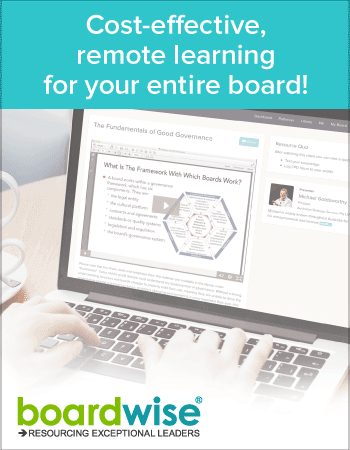Board Meeting Etiquette
-
meetings
Board Meeting Etiquette
Board meetings are a critical governance function for any organisation. They provide board members with the ability to fulfil their roles in respect to oversight, strategic guidance, fiduciary duties, and more. However, unproductive board meetings hamper the board’s ability to fulfil its role. Directors displaying poor meeting etiquette often contributes to this outcome.
What exactly constitutes proper etiquette for board meetings?
It involves practices that make meetings effective and respectful for all board members and participants. When directors demonstrate good meeting etiquette, board meetings drive progress on priorities and help to build a cohesive governance team.
Top Tips for Proper Etiquette in Board Meetings
Arrive on Time
Lateness disrupts board meetings significantly. When directors trickle in late, they miss context and force others to backtrack. By arriving on time, you show respect for your colleagues and make meetings far more productive.
Aim to arrive 10-15 minutes early so you have time to get settled, review notes, and chat informally. If an emergency requires late arrival, inform the board chair or secretary in advance so they can plan accordingly.
Prepare Thoroughly
Review the board book and pre-read materials well in advance. Analyse the financials, data, and proposals that will be discussed. Make notes on areas where you have questions, input, or advice to offer.
Thorough preparation enables you to contribute substantively. You also identify gaps where the board needs additional clarity from management or external advisors.
Limit Distractions
It’s unprofessional to be distracted by devices during the board meeting. Emails and texts can wait. Keep your phone silenced and close unnecessary laptop windows. Avoid side conversations as well. You cannot provide sound guidance if you aren’t fully present.
Listen Attentively
Listen closely as your fellow directors speak. Maintain eye contact and refrain from interrupting. Active listening keeps you engaged and helps identify nuances in the discussion. You’ll gain helpful context before adding your own voice.
Stay on Topic
Wandering off agenda wastes time and productivity. If the discussion goes down a rabbit hole, you should expect the chair or secretary to gently guide things back on track. An example of how this could be done:
“I want to hear more about the risk scenario you mentioned, but should we circle back to the budget approval first to stay on schedule?”
Stick to Time Limits
Every agenda item has a reason and an allotted time slot. Respect the schedule so the board can cover all necessary material. If your update or comments exceed your timeframe, suggest tabling the remainder for future discussion or offline follow up.
Share the Stage
Ensure your speaking time is equitable compared to other directors. Make a point of drawing out quieter members for their perspectives. Balance participation so no single director dominates the dialogue.
Disagree Respectfully
Healthy dissent sharpens the board’s thinking, but conflicts should remain collegial. Frame objections constructively by acknowledging points of alignment first. Don’t make things personal. Focus on issues, not individual directors.
Maintain Confidentiality
Board discussions are private. Refrain from sharing board matters or meeting proceedings externally without authorisation. Uphold any other confidentiality requirements outlined in bylaws or policies.
Reach Consensus When Possible
During thorny issues, seek compromise and common ground. Explore whether dissenting directors’ core concerns can be addressed without rejecting proposals outright. Bridge differences to preserve board cohesion.
Follow the Agenda
Refrain from raising new business not already on the agenda. New topics may require preparation and research before the board can have a substantive discussion. Keep meetings productive by focusing on the agreed-upon agenda.
Wrap Up Properly
Leave adequate time at the end of the meeting to confirm next steps, milestones, and accountabilities. Ensure directors walk away with clarity on action items, responsibilities, and timing before formally adjourning.
Show Appreciation
Thank your fellow directors for their service, perspectives, and commitment to the organisation’s governance and success. Expressing gratitude contributes to healthy board dynamics and culture.
Integrating Cultural Practices
When bringing together directors from different cultural backgrounds, it is important to integrate practices (such as Karakia or welcome to or acknowledgement of country) in a thoughtful way. Each culture has its own traditions and norms around communication, etiquette, dress, food, and more. Blending these requires understanding, compromise, and adaptability from all parties.
The goal should be finding common ground while still allowing individuals to observe important cultural practices specific to meetings. With openness, patience, and respect, a board can develop an inclusive environment where people feel valued for their diversity as well as their shared purpose.
The Bottom Line on Meeting Etiquette
Proper meeting etiquette enables boards to operate at the level necessary tot fulfil its role. Following above guidelines will help your board to conduct its board meetings efficiently, foster collaboration, and model leadership for the entire organisation. When directors demonstrate respect and professionalism, it sets the tone for others to do the same.
Resources
How to Present to the Board of Directors
Who Should Control the Reporting of Information to the Board?
Dealing with Difficult Directors in your Boardroom
Frequently Asked Questions
What are the ten golden rules of meetings?
The ten golden rules of meetings are:
- Start on time.
- Stick to the agenda.
- Encourage participation from everyone.
- Listen respectfully.
- Stay off devices and avoid distractions.
- Summarise action items and next steps before adjourning.
- Maintain confidentiality of meeting discussions.
- Follow up on tasks and assignments after the meeting.
- Start and finish on schedule.
- Show appreciation to attendees for their time and contributions.
Why is meeting etiquette important in business?
Meeting etiquette is important in business because it enables teams to collaborate effectively and make progress on priorities. When meetings are disorganised or unprofessional, they drag down productivity. Proper meeting etiquette signals respect for people's time and contributions. It keeps interactions positive so teams can work cohesively.
What is a code of conduct in a meeting?
A code of conduct establishes expectations around behaviour and professionalism in meetings. It typically covers rules like arriving on time, sticking to the agenda, listening respectfully, avoiding distractions and side conversations, and maintaining confidentiality of discussions. A clear code of conduct helps facilitate productive meetings.
What are the three principles of etiquette?
The three main principles of etiquette are:
- Consideration - Being thoughtful about how your actions and words affect others.
- Respect - Showing regard and courtesy toward other people.
- Honesty - Being truthful and sincere in your interactions.



